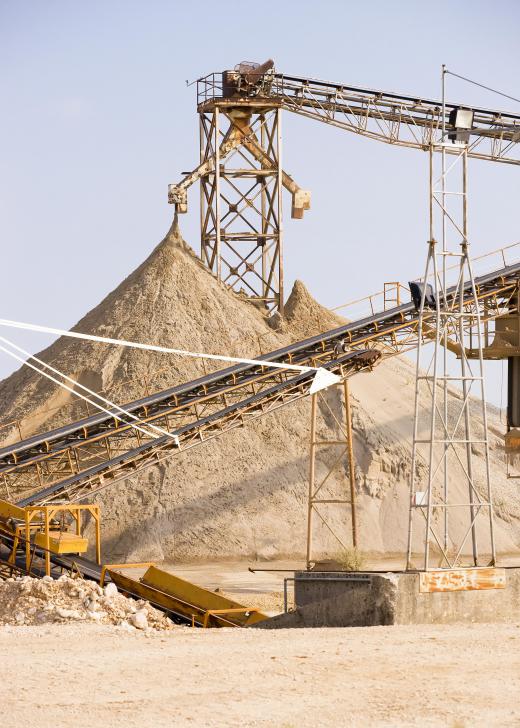Transporting fine particulate matter from one point to another within a set location can be difficult because dust can be formed, creating a hazardous work environment. To counter this problem, a drag chain conveyor can be used. This conveyor system is fully enclosed to help prevent dust from entering the air and circulating through a building or other space, potentially leading to worker illness. The drag chain conveyor features a cable or chain that runs through a long pipe; discs sometimes known as "pucks" are connected to the chain, and these pucks are sized so they fit snugly within the pipe.
As the chain moves through the pipe, the pucks are dragged along the walls of the pipe, so any materials that are dumped between pucks will be transported along the pipe. The drag chain conveyor will feature several pucks on the chain, often hundreds of them, to efficiently move fine particulate matter. The pucks may be made from metal or synthetic materials such as plastic, and they will generally be spaced several inches or even feet apart to allow for plenty of storage space. The chain of the drag chain conveyor is flexible so it is possible to guide materials around corners in a pipe.

While the most appropriate application for a drag chain conveyor is the movement of fine particulate matter such as sand or grains, the system is not appropriate for moving larger objects. In fact, it is likely to get jammed if larger objects are placed inside, leading to increased incidences of maintenance and repair. Some drag chain conveyor models use cables instead of chains to pull the pucks; if this is the case, routine maintenance will be necessary in order to inspect the cable for frays that may lead to complete failure of the system.
As an alternative to a drag chain conveyor system, some manufacturers will instead use a blower system that essentially propels materials through a pipe to a discharge container. This system can lead to excess dust production, especially at the discharge point. Another alternative to the drag conveyor is the auger conveyor, which features a long screw that turns within a straight pipe. The teeth of the screw will propel the materials in a particular direction relative to the way the screw turns. The drag conveyor has an advantage over an auger conveyor, however, because an auger conveyor cannot feature any curves or angles; the pipe must be straight to accommodate the straight auger.
